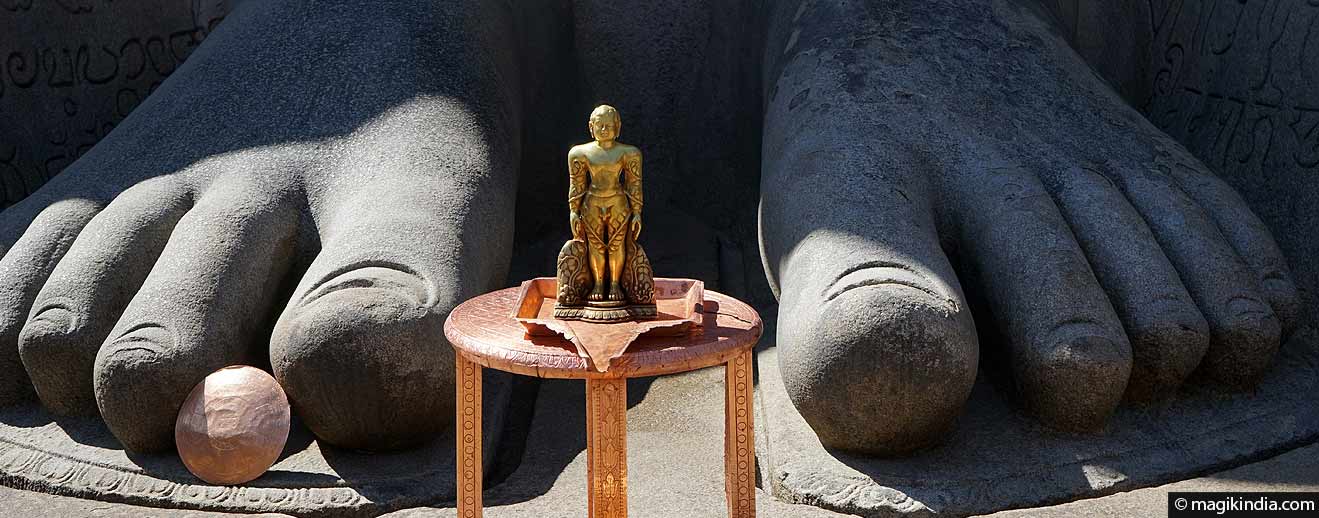
Shravanabelagola, the jain geant of Karnataka
The colossal Gomateshwara stands tall on its hilltop, like a lighthouse protecting the town of Shravanabelagola and benevolently guiding the traveller. This Jain holy place of rocks and palm trees breathes tranquillity.
Shravanabelagola (“Shravana’s white pond”) lies 150km from Bangalore, the state capital of Karnataka. It boasts two sacred hills, Vindhyagiri and Chandragiri. Tucked between them is a kund (bathing tank) called the bili-gola (“white pond”), from which the town takes its name.
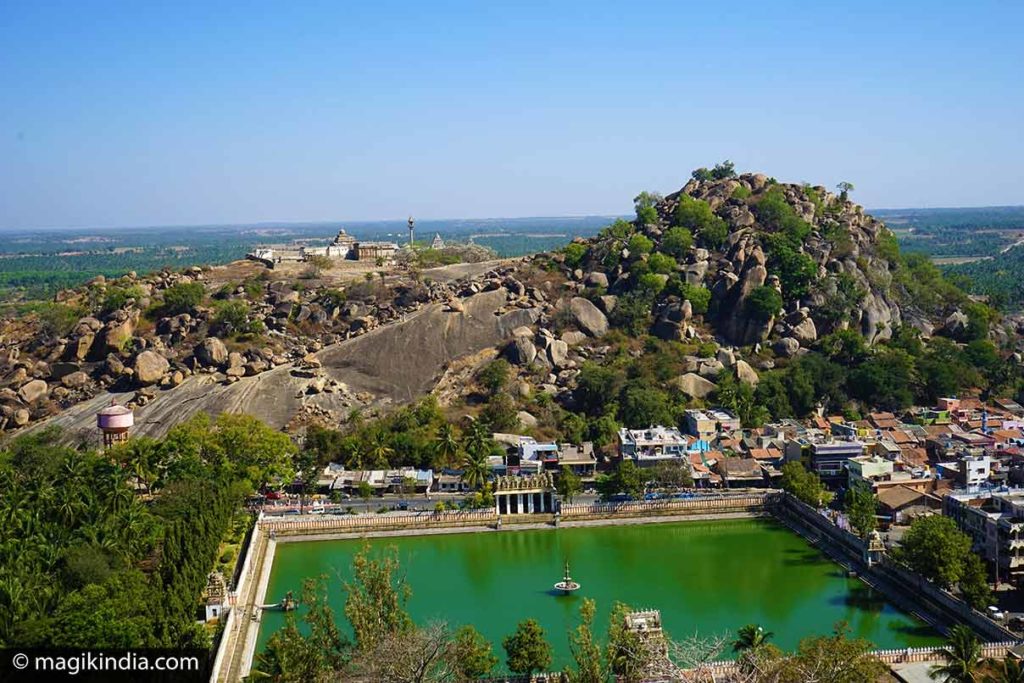
The town has been a Jain holy place for over two thousand years. Shri 108 Bhadrabhau Maharaji (Digambar Jain Muni), came from Ujjain (Madhya Pradesh) and settled in Shravanabelagola with his disciples. Chandragupta Maurya, the great emperor who ruled over a large part of India at the time, was so impressed by the Digambar that he passed his kingdom to his son and retired to the Shravanabelagola area.
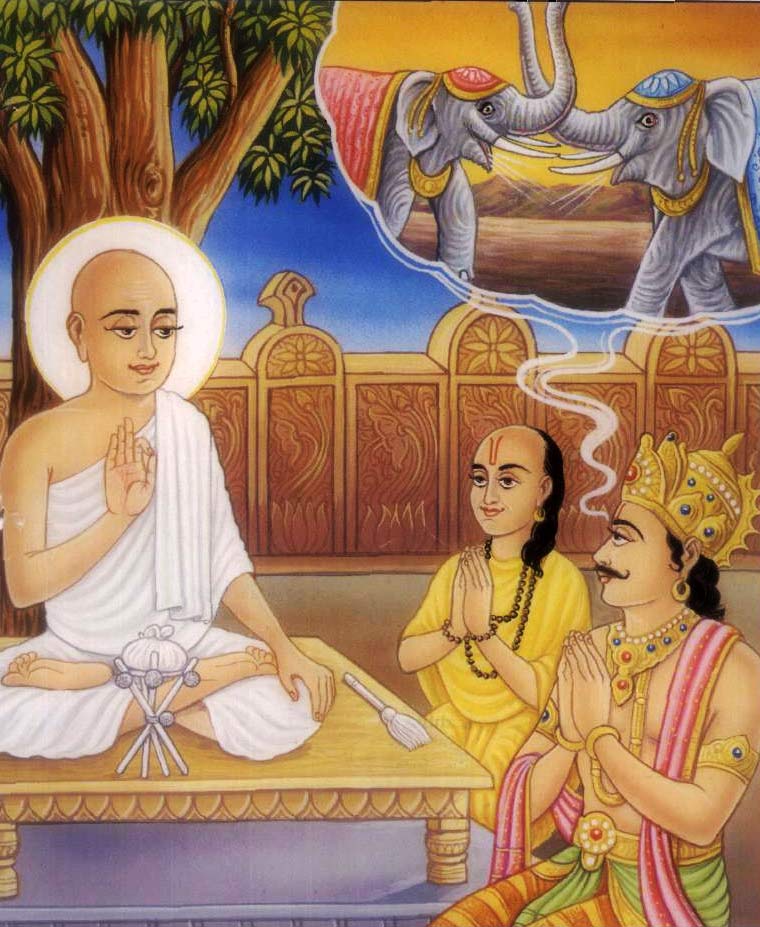
Vindhyagiri hill
A 18m granite colossus stands in meditative pose on Vindhyagiri hill, 134m above sea level. It was built in 981 CE, on the orders of a general called Chavundaraya, and is considered one of the largest monolithic statues in the world.
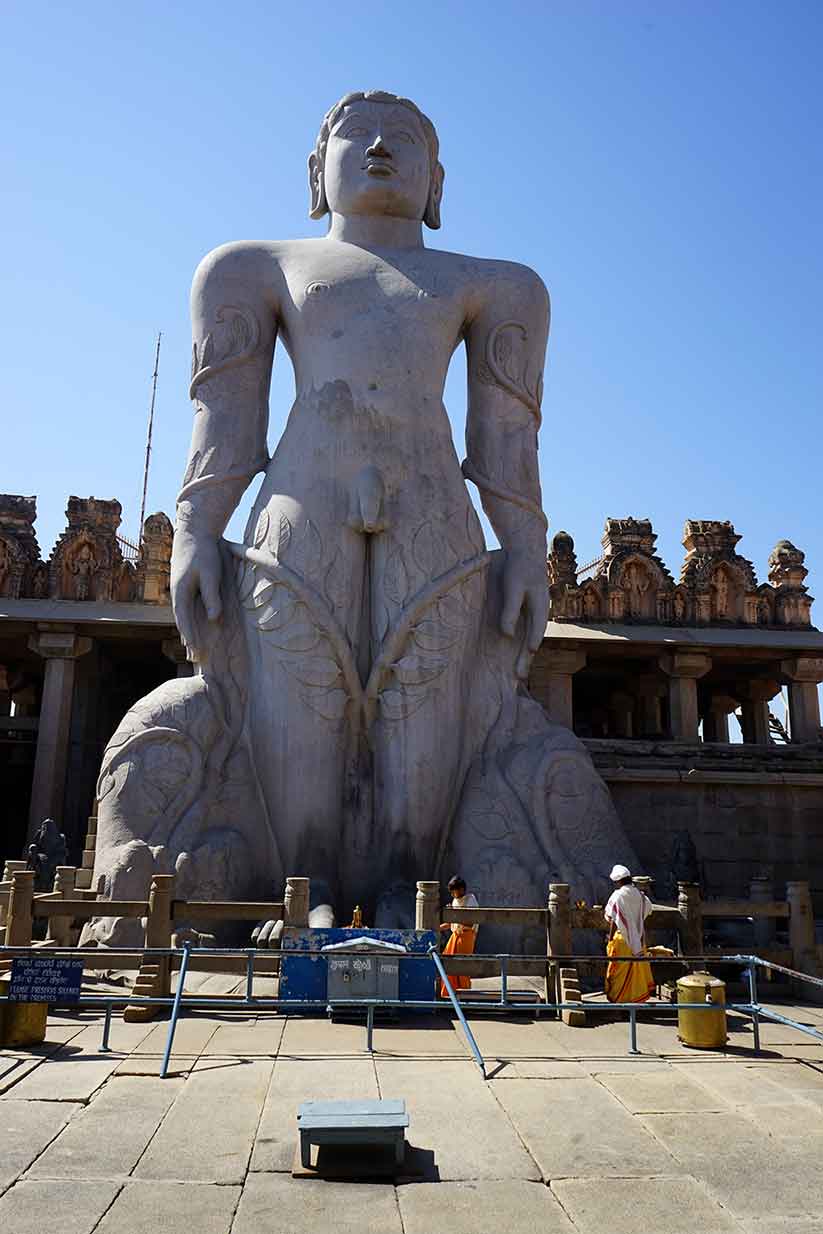
Gomateshwara, also known as Bahubali, was the son of Adinatha, the first Jain saint or Tirthankar.
When his brother Bharata challenged him for the succession to the throne, the two brothers fought it out. Bahubali won but, suddenly struck by the futility of fighting for power, he renounced his throne and all worldly pleasures. He entered a deep meditation for a full year and attained kevali arihantha, the state of beatitude.
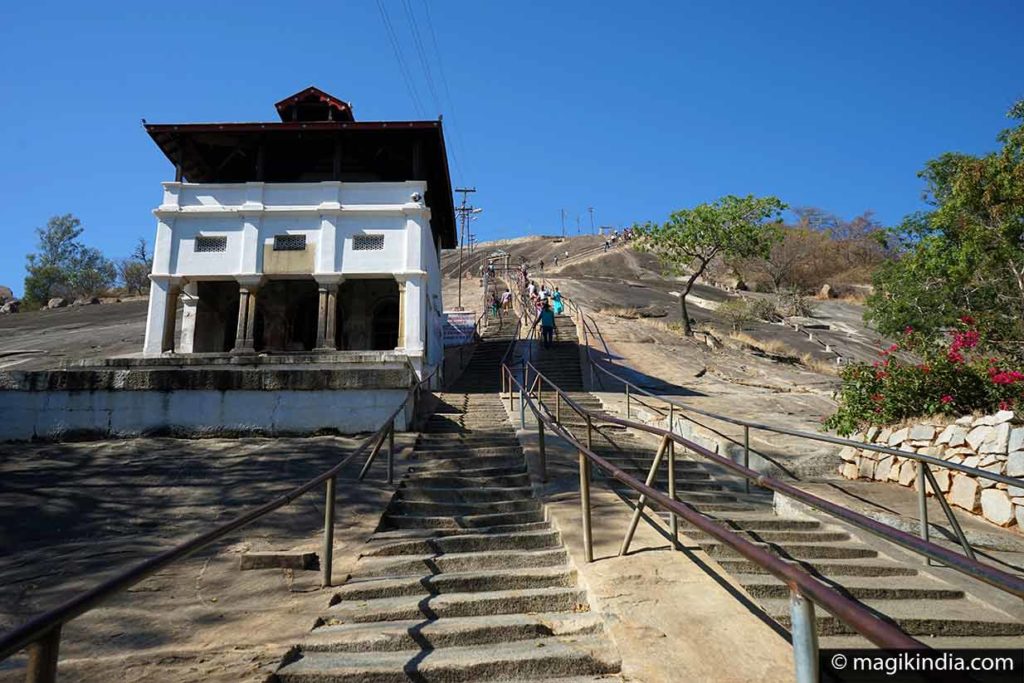
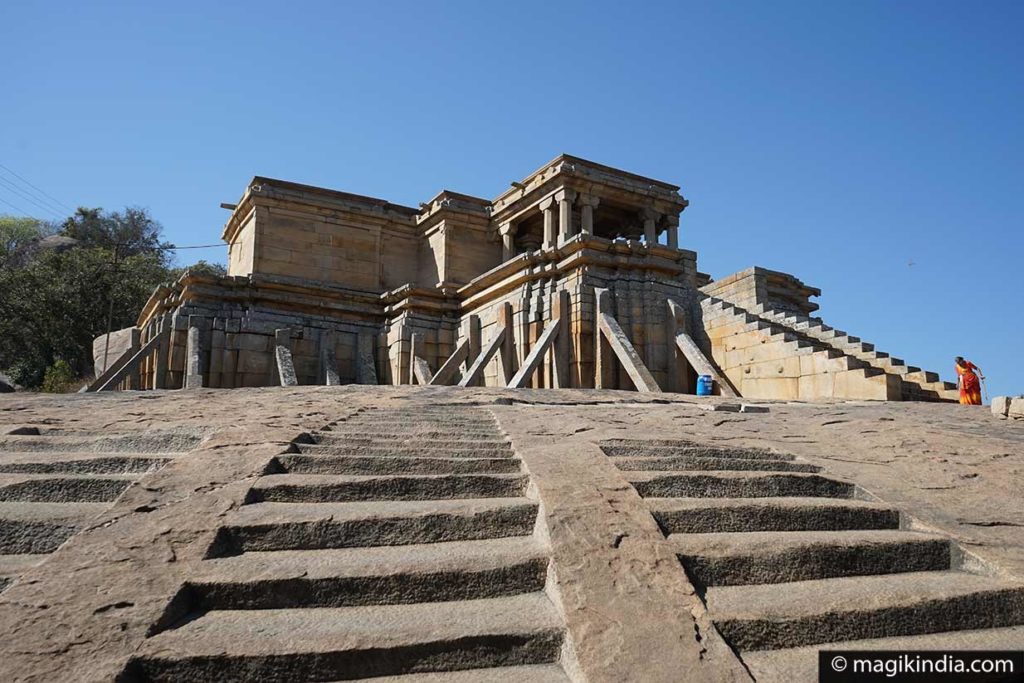
To reach Gomateshwara shrine you climb 647 steps. On the way you will pass the Odegal temple, so named because of the buttresses, called odegal, around the base.
The temple is also called the Trikuta Basti and consists of three chambers, each with a Tirthankar carved in schist.
The main shrine contains a beautiful figure of Adinath flanked by two chamara holders. Adinath is the first of the twenty-four Jain saints.
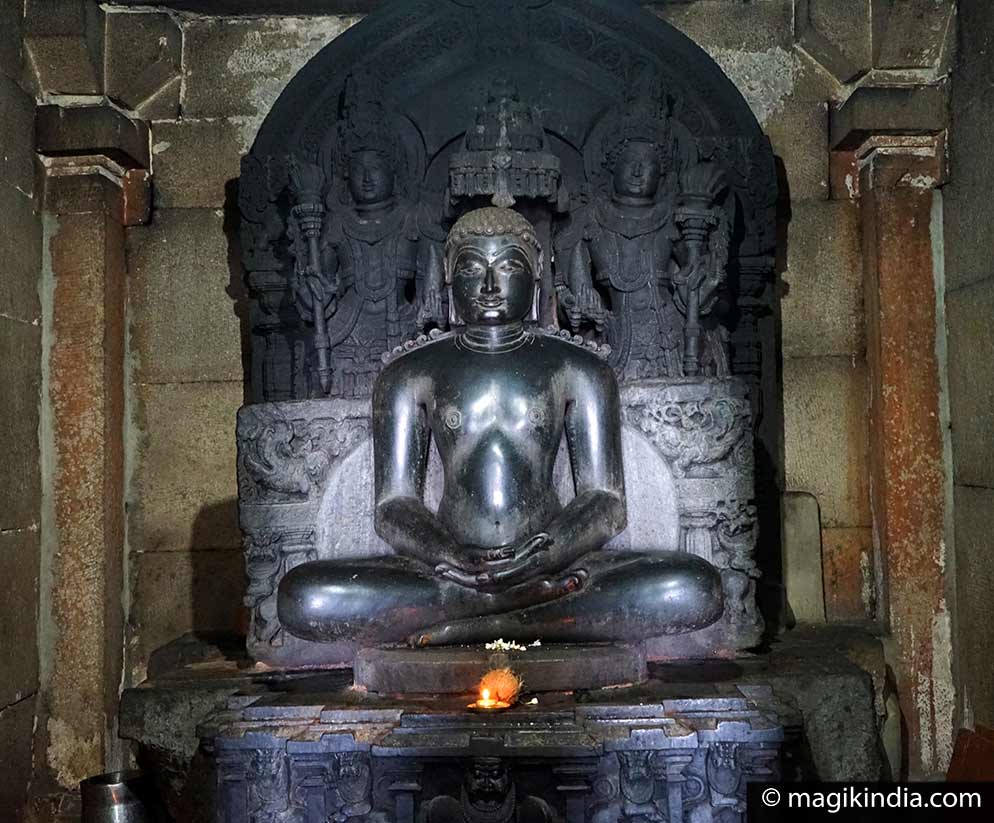
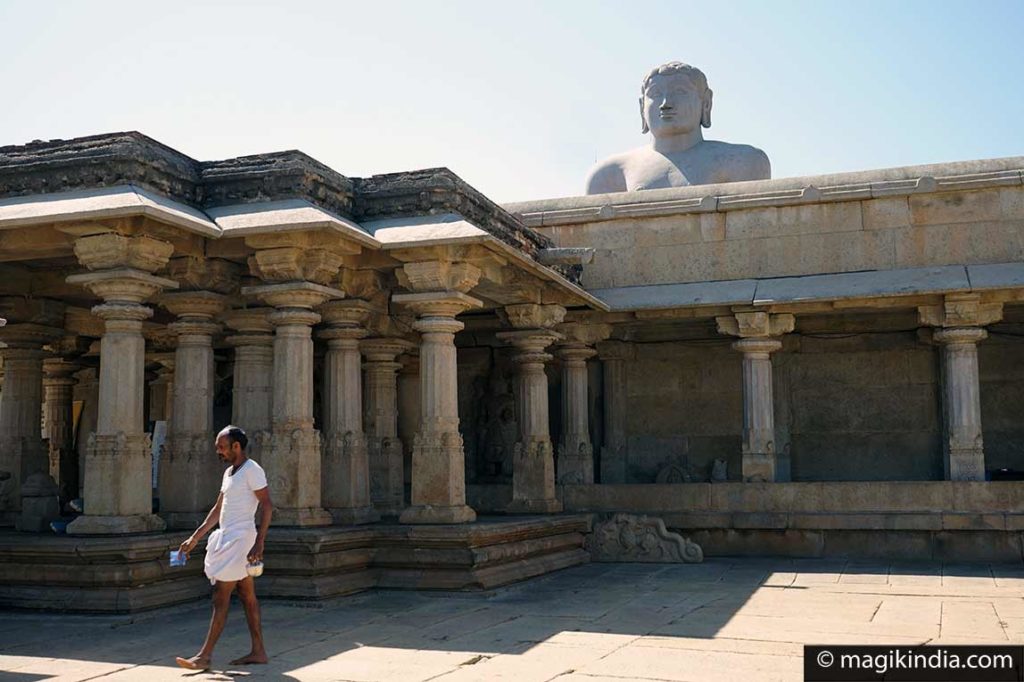
Every twelfth year thousands of faithful gather at Gomateshwara temple to perform the Mahamastakabhishekam, a spectacular ceremony in which the statue is anointed with various substances such as coconut juice, sugarcane juice, milk, ghee, saffron, sandalwood paste, turmeric, gold coins and precious stones. The next Mahamastakabhishekam will take place in 2024

Chikkabetta – Chandragiri hill
Opposite Vindhyagiri Hill stands the equally rocky 61m Chikka Betta or Chandragiri Hill, with a group of religious structures on its summit. Some of them are remarkable:
The Brahmadeva Stambha, a huge decorative pillar carved on the four sides of its base: Kushmandini on the north, Padmavathi on the south, Yaksha on the east and a galloping horseman (emblem of Brahmadeva) on the west.
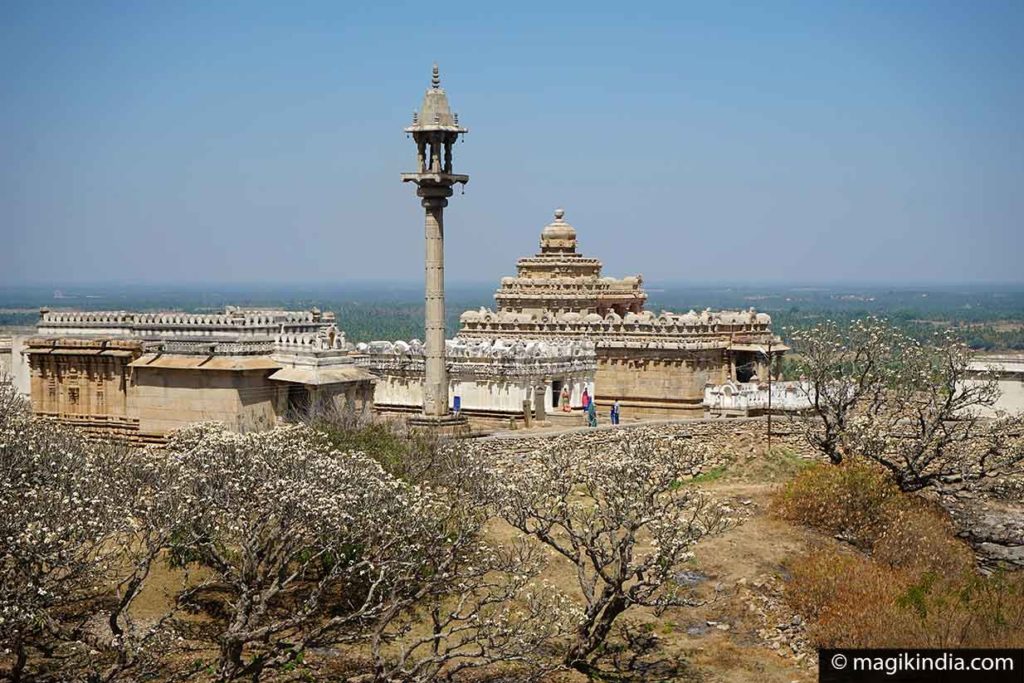
It was erected by a Jain merchant during the reign of Mysore King Chikka Deva Raja Wodeyar (1672-1704 AD).
Brahmadeva is originally a Hindu god who was, over time, adopted by the Jain faith. He is a popular guardian deity mainly represented in Karnataka.
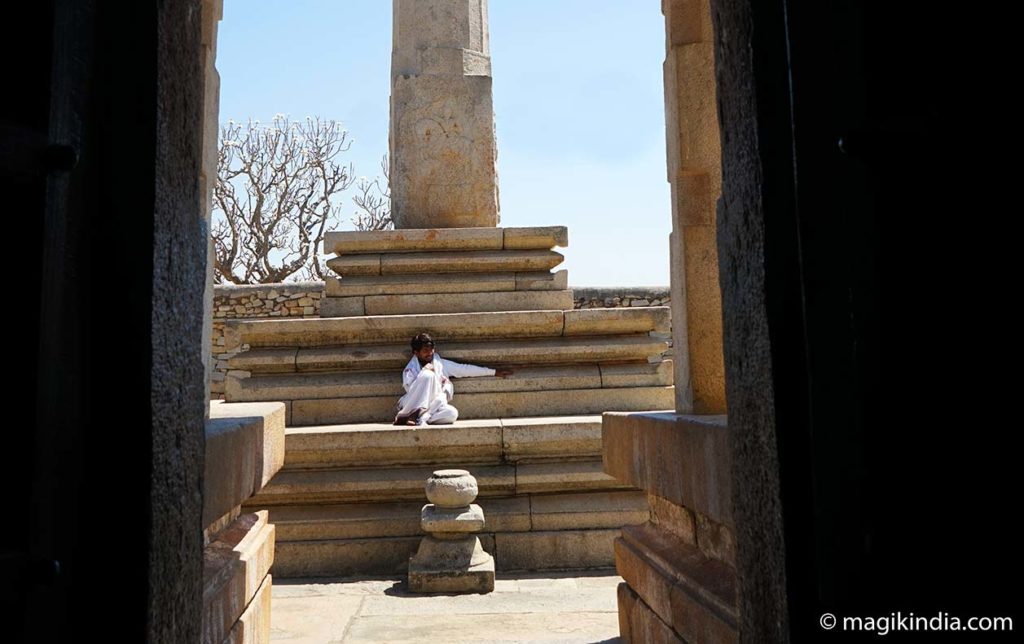
Kattale or Padmavathi temple, which houses an idol of Yakshi Padmavathi and a huge schist statue of Adinatha.
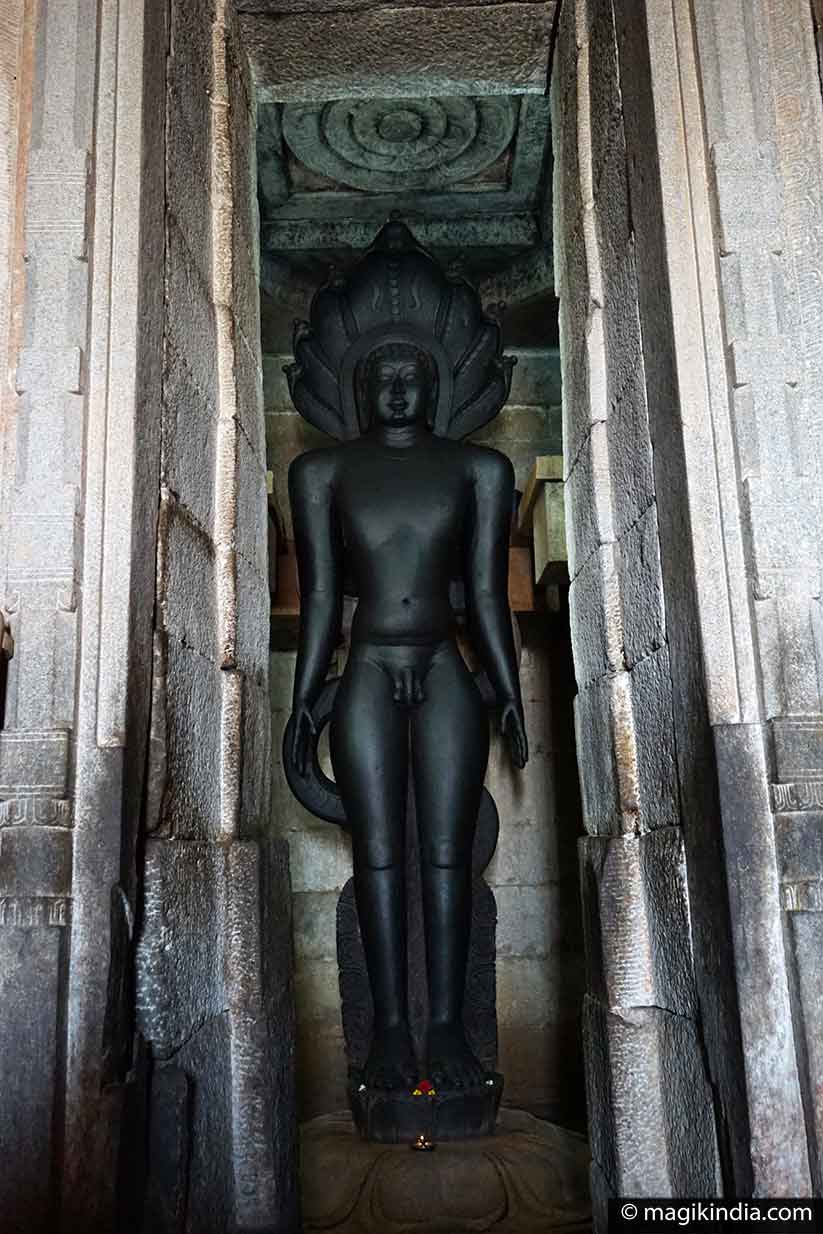
Chandragupta temple, which boasts a wall full of carvings recounting the life of Chandragupta, a king of the Maurya dynasty.

Bhadrabahu cave which is believed to be the tomb of the Jain master of the same name. We find there the feet of the sage carved in the rock.
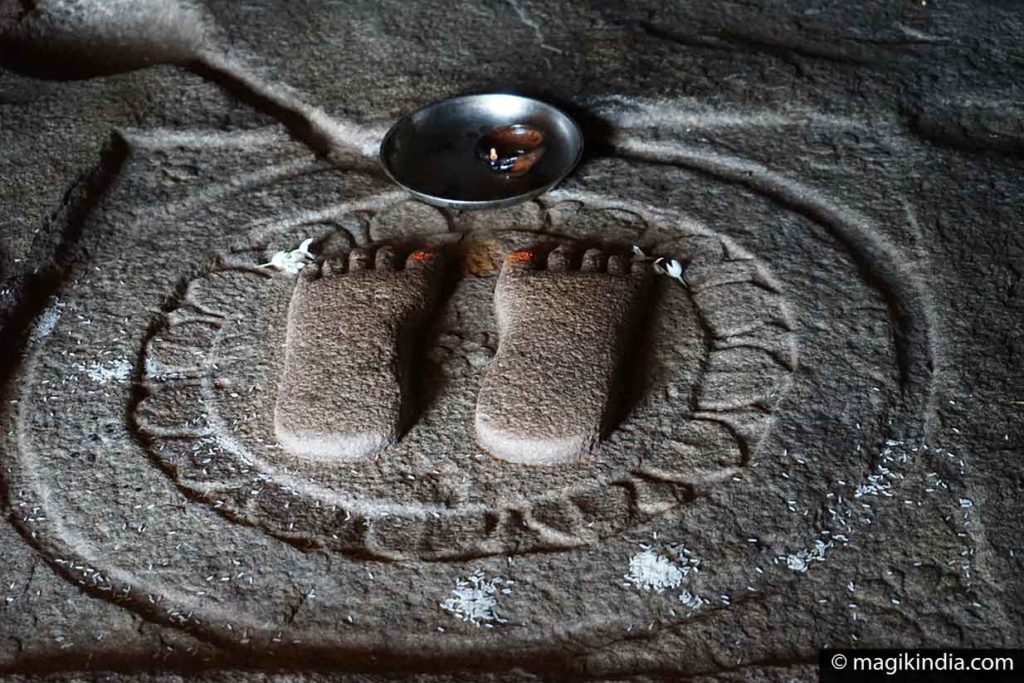
Bharata, an amazing statue of Bahubali’s brother, buried up to the knee. This 1.5m high figure, carved from a variety of soapstone, was never completed.
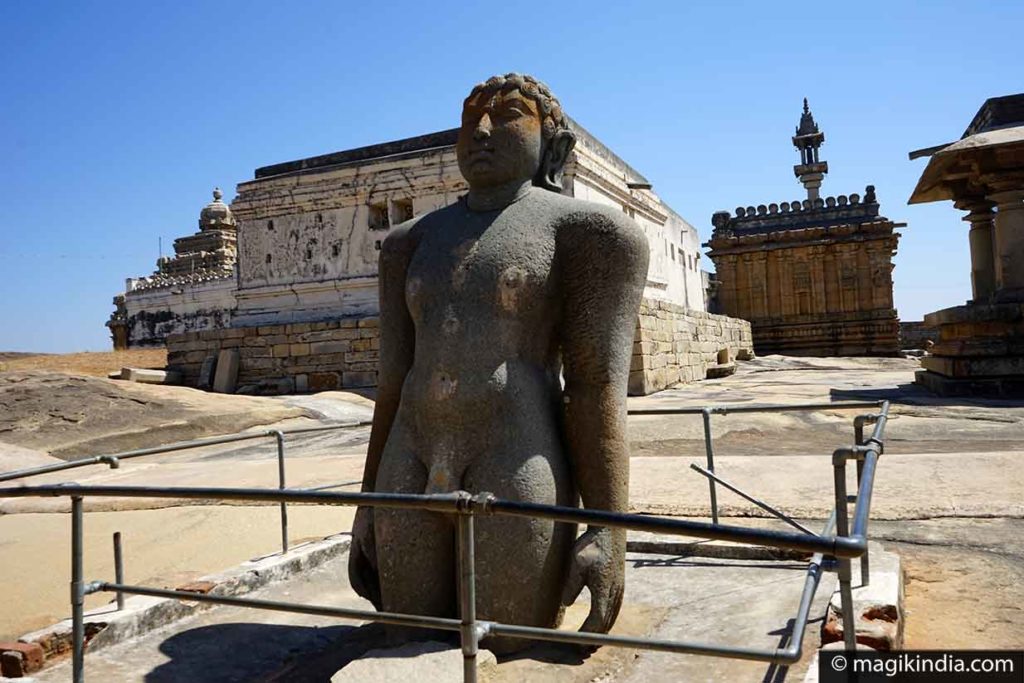
Also worth seeing in Shravanabelagola
Mathada Basti

A ‘matha’ is a Jain ashram. This matha is thought to have been renovated in the 18th century. Chavundraya is said to have founded it and settled his master, Namichandra Siddhantadeva, here.
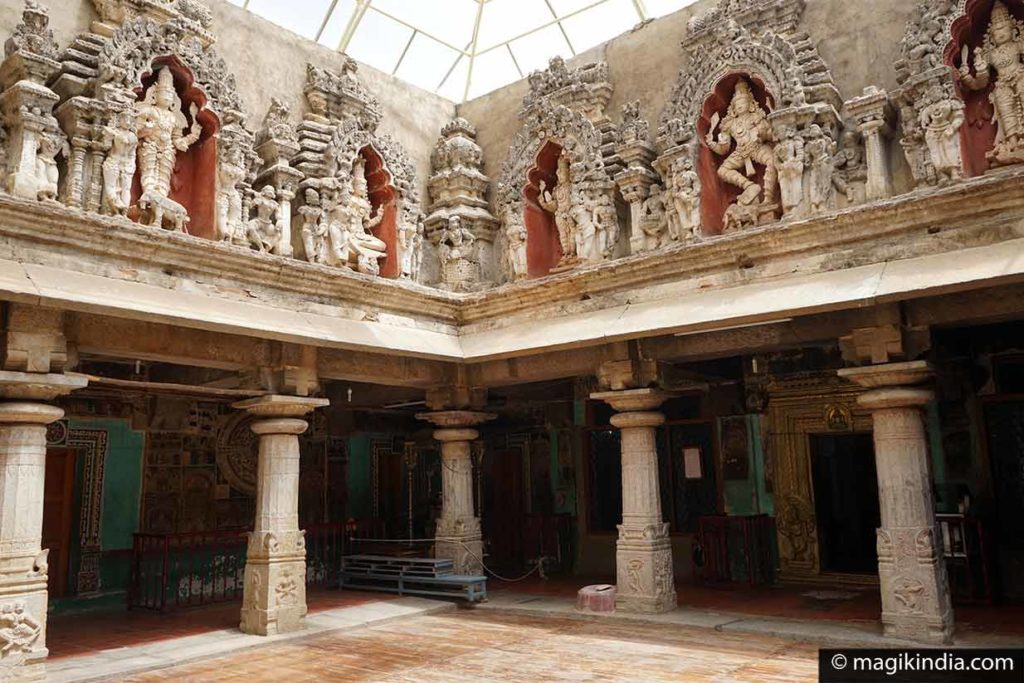
The open space in the middle has been covered in with a glass roof. There are three garbhagrihas (inner sanctums) and numerous wall colourful paintings depicting audiences with the king Krishnaraja Wodeyar III, the Tirthankars, etc.
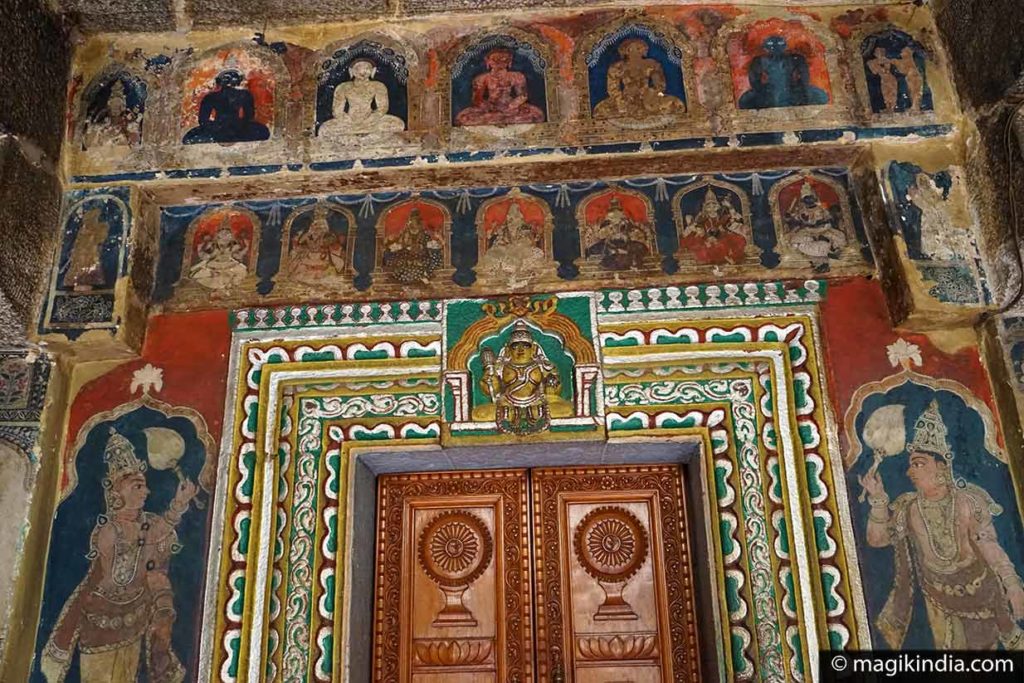
Bhandara Basadi
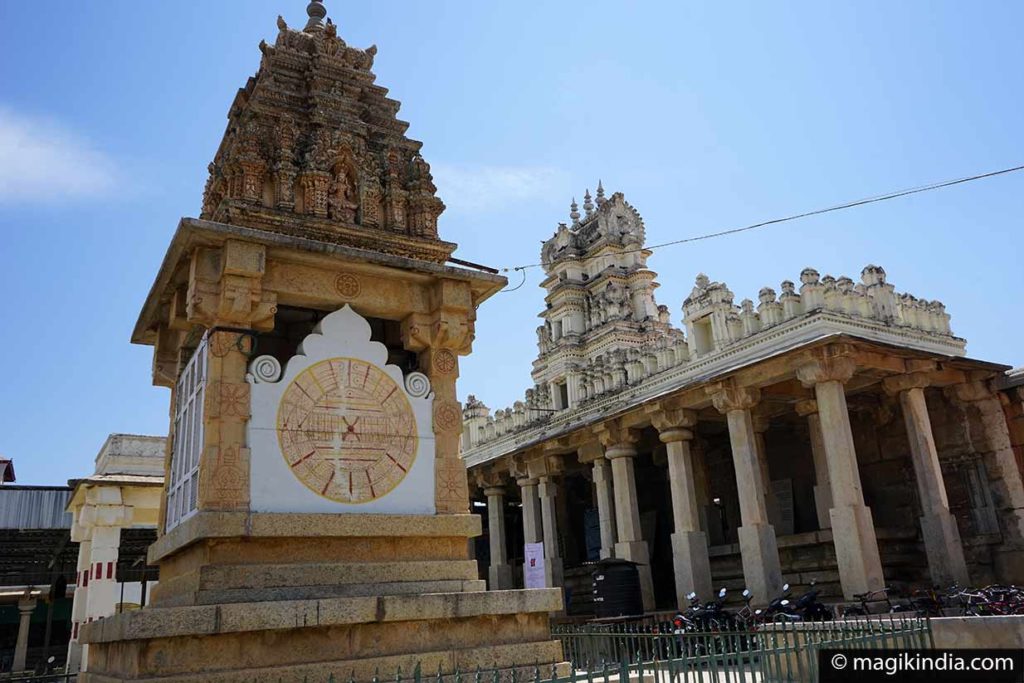
Beside the Mathada Basti stands a temple built in 1159 by Bhandari Hullayya, treasurer to the Hoysala king Narasimha. The rectangular building is called the temple of the 24 Tirthankars. Its garbhagriha is surrounded by 12 pillars. One of the walls is decorated with the 24 Tirthankars and the entrance door boasts some finely carved dancing figures.
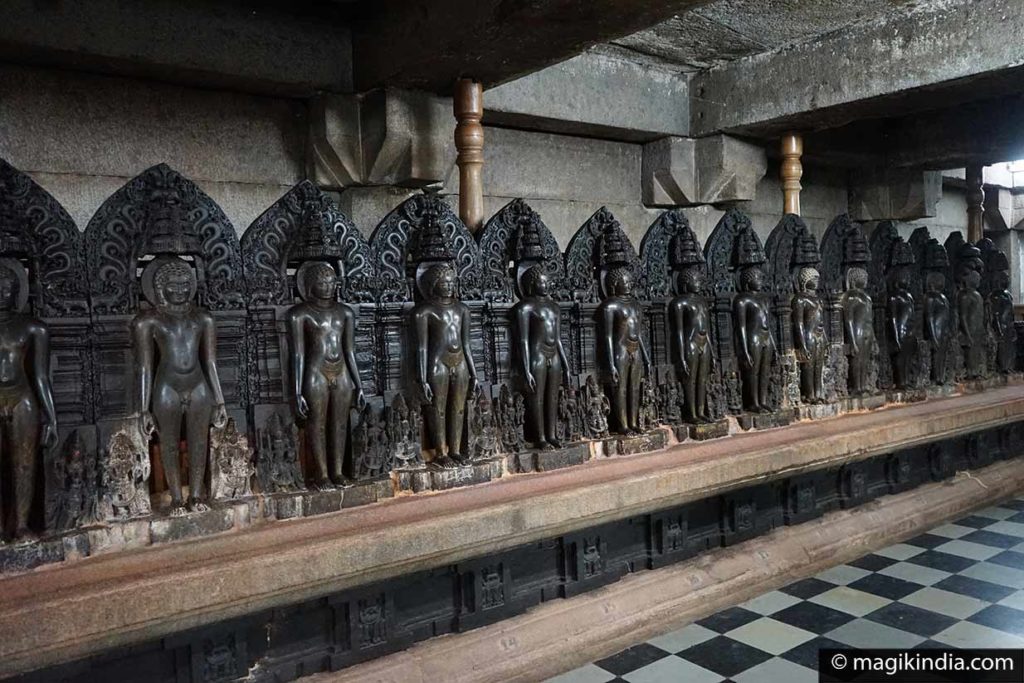

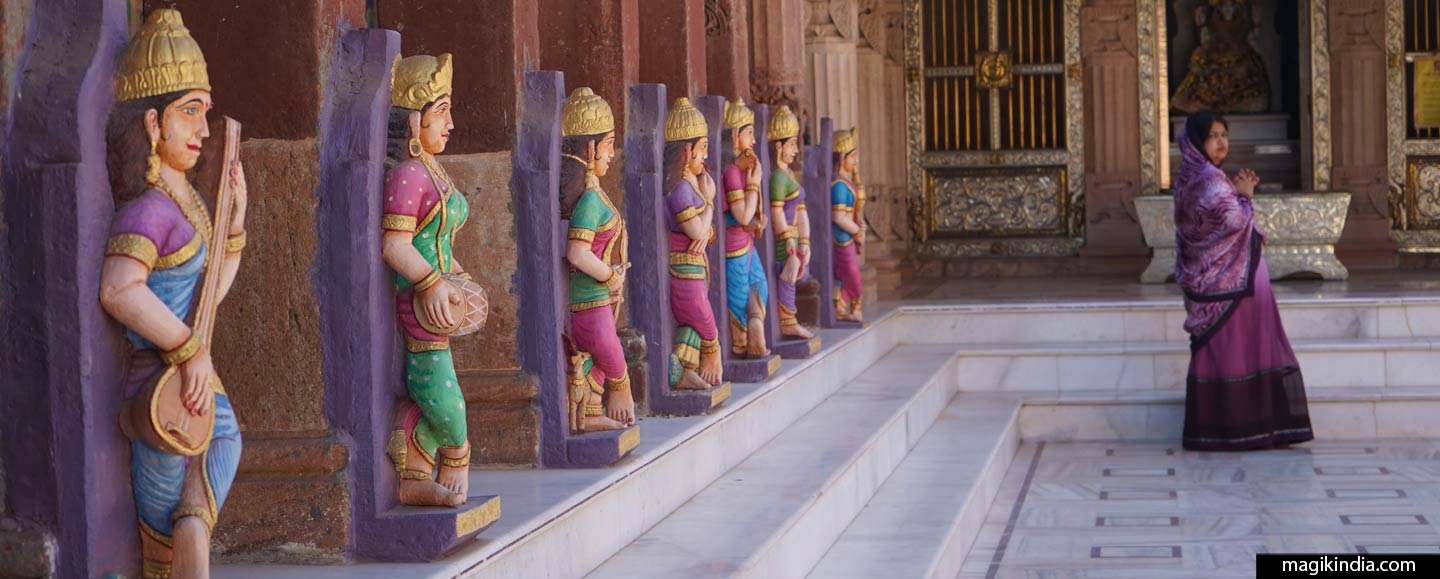
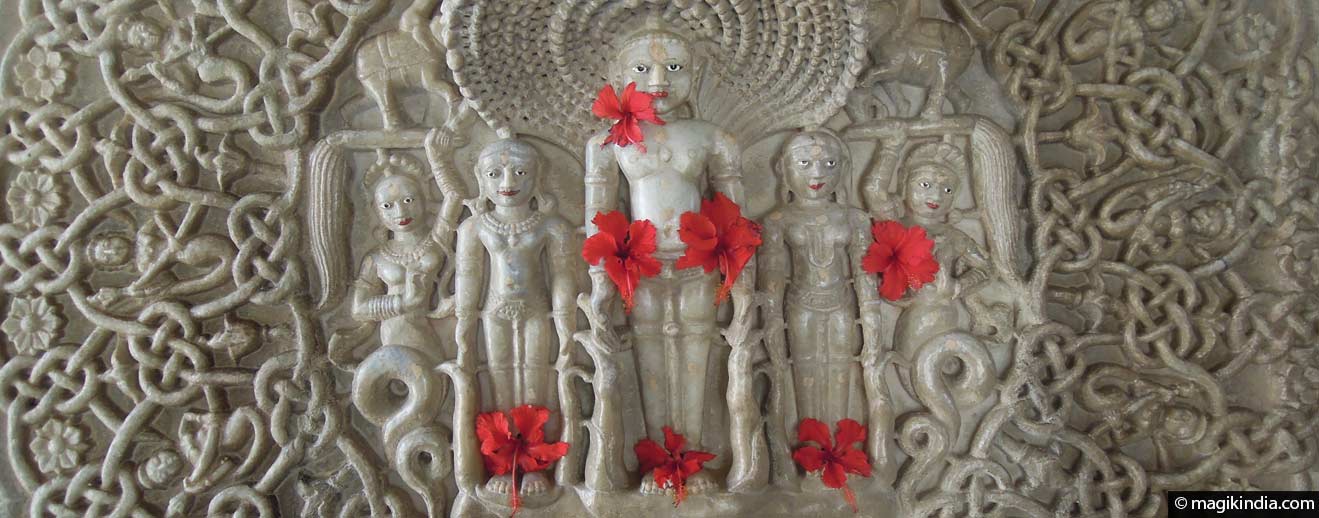
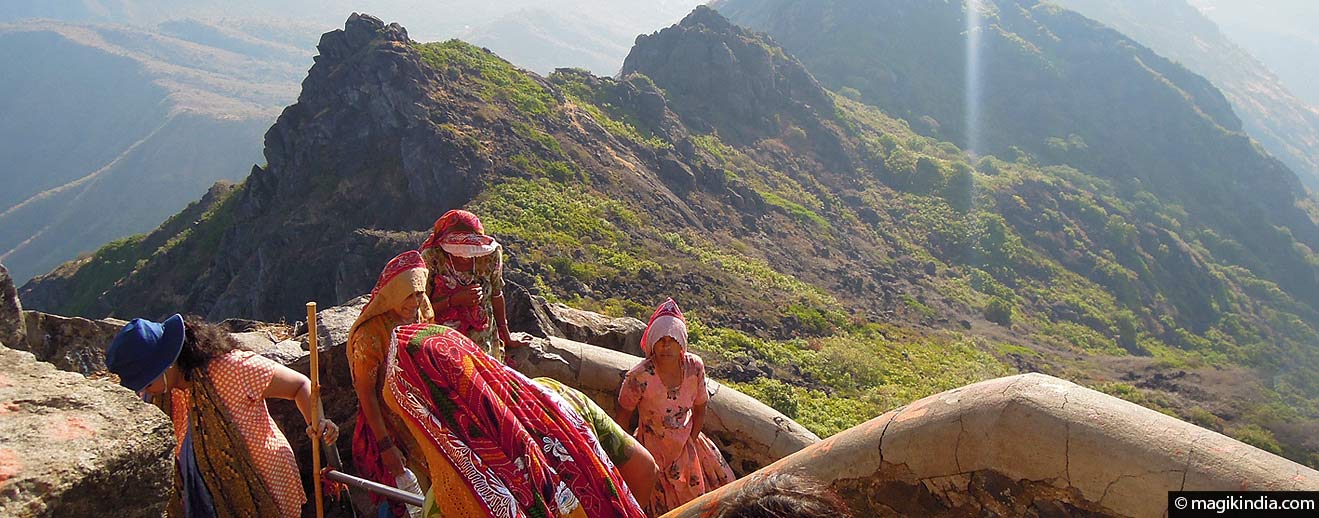
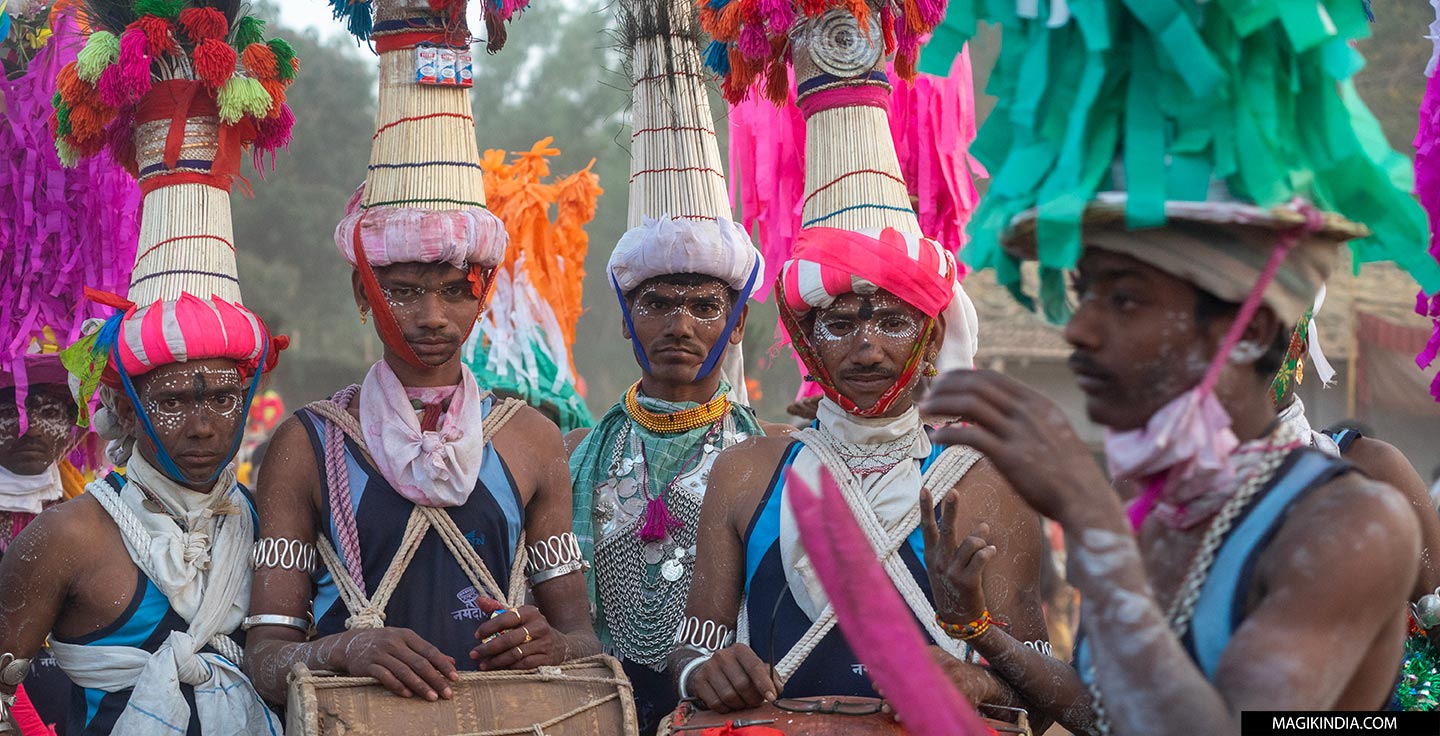
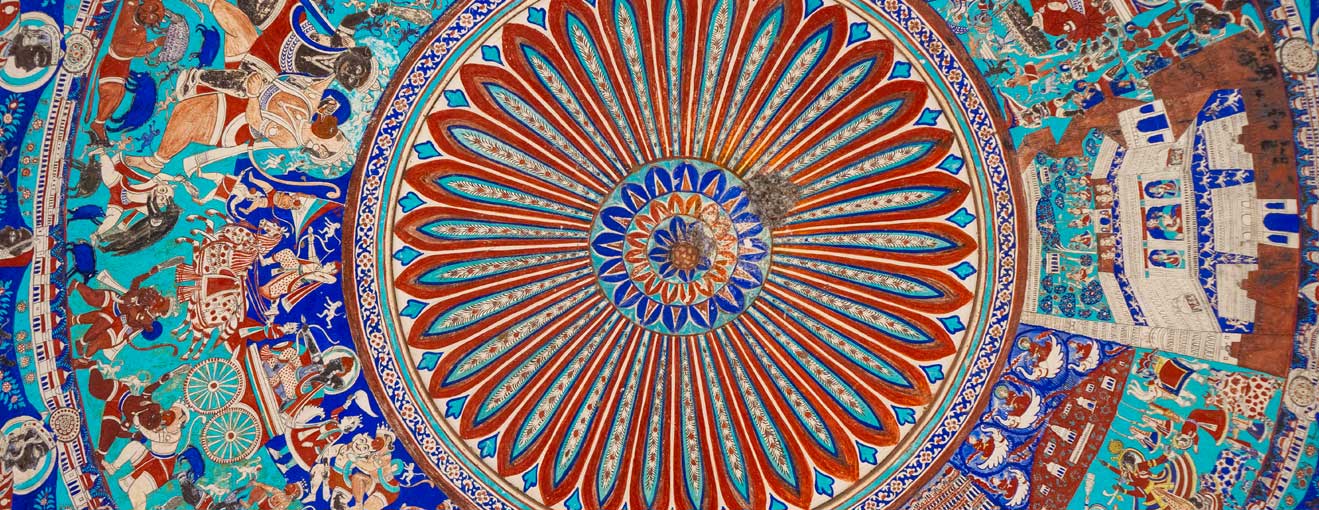
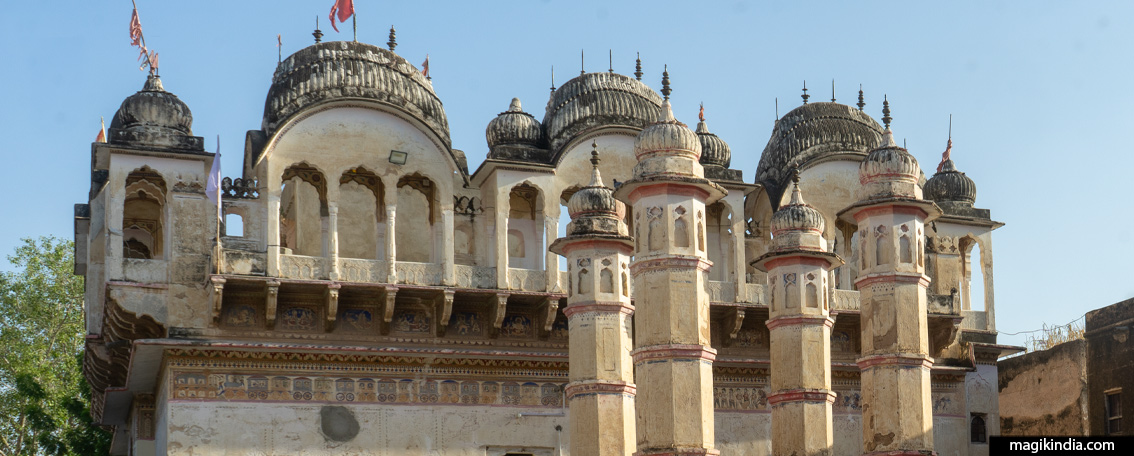
Jain Dharma Dam Bhagya purti Navratri Jaynagar Mata